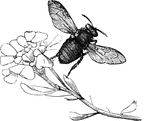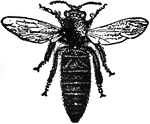Clipart tagged: ‘drone’

Drone Bee
"The working bee, for collecting wax, enters a flower, the stamens of which are loaded with pollen.…

Drone Bee
"Bee is the common name given to a large family of hymenopterous or membranous-winged insects, of which…

Queen Bee
"Bee is the common name given to a large family of hymenopterous or membranous-winged insects, of which…

Worker Bee
"Bee is the common name given to a large family of hymenopterous or membranous-winged insects, of which…

Royal Cells
"Bee is the common name given to a large family of hymenopterous or membranous-winged insects, of which…


